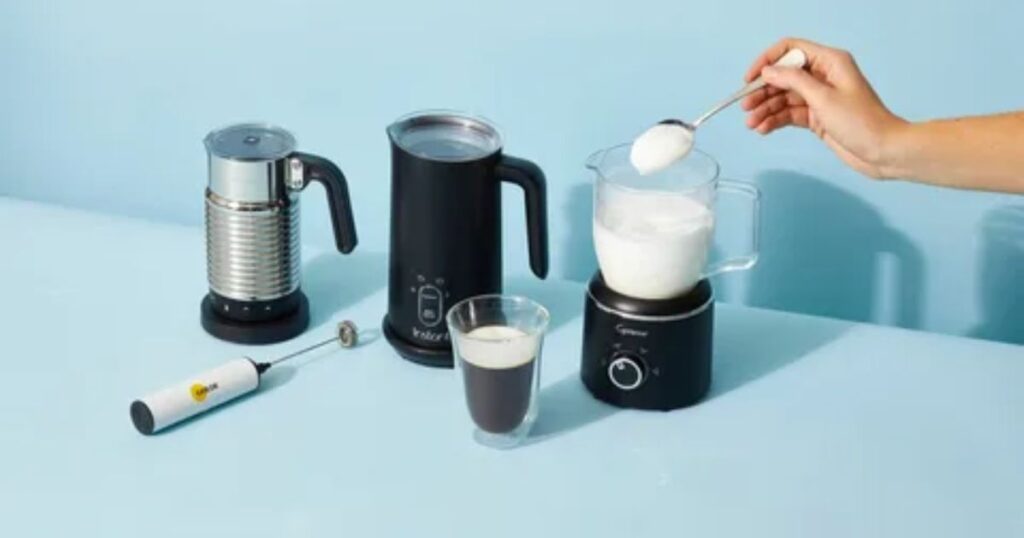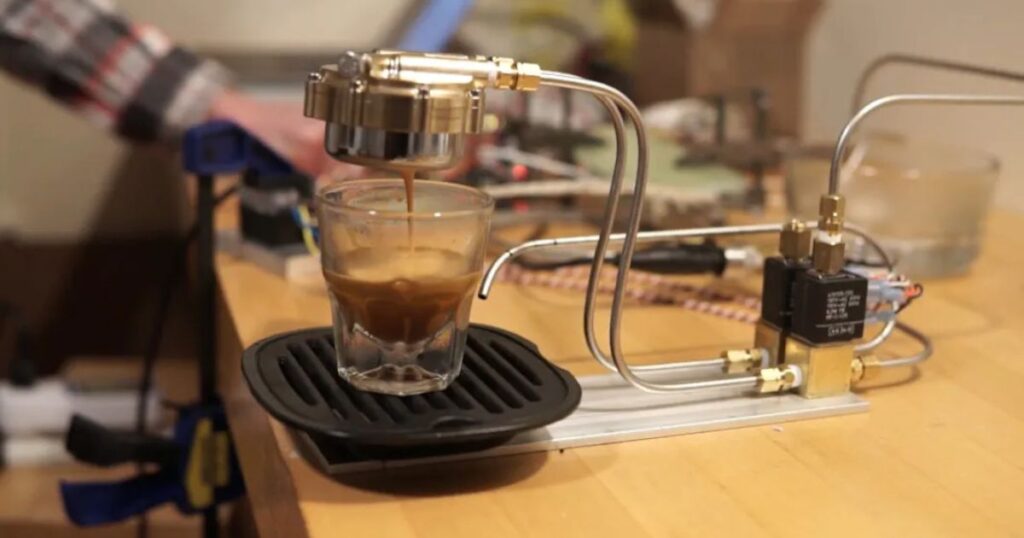Steaming milk at home involves heating milk and introducing air to create a creamy, frothy texture, often used for lattes or cappuccinos. This process requires precise control of temperature and technique to achieve the perfect consistency.
Curious about how to turn your regular coffee into a café-quality treat? Mastering milk steaming could be your game changer!
Steamed Milk: What’s the Big Deal?
Steamed milk is a key component in many popular coffee beverages like lattes and cappuccinos. The magic of steamed milk lies in its smooth, velvety texture, which adds a creamy richness to drinks.
The process of steaming not only heats the milk but also infuses it with tiny bubbles, known as microfoam. This microfoam gives steamed milk its characteristic silky mouthfeel and enhances the flavor of the coffee, creating a harmonious blend that elevates the overall drinking experience.
Steamed Milk vs. Frothed Milk: What’s the Difference?
While both steamed and frothed milk are used in coffee drinks, the two are quite different in texture and purpose. Steamed milk, as mentioned, is smooth and velvety, with a texture that blends seamlessly into the coffee. Frothed milk, on the other hand, is airier and consists of larger bubbles, creating a foam that sits on top of the drink.
This foam is often used for cappuccinos or as a decorative layer on lattes. In essence, steamed milk integrates into the coffee, while frothed milk sits atop, offering a light, fluffy contrast.
How to Steam Milk at Home: Choosing the Best Milk

When steaming milk at home, the type of milk you choose can significantly impact the texture and flavor of your drink. Here’s a guide to selecting the best milk for your needs:
Whole Milk
Whole milk is the go-to choice for steaming due to its high-fat content, which creates a rich and creamy texture. The fat in whole milk helps produce a stable microfoam, making it easier to achieve that silky consistency that coffee lovers crave. It’s perfect for creating indulgent lattes with a full-bodied mouthfeel.
Nonfat Milk
Nonfat milk, or skim milk, produces a lighter, airier foam because it lacks fat. The microfoam is less stable and more prone to breaking down, resulting in a thinner texture. However, nonfat milk is a good option for those looking to reduce calorie intake while still enjoying a frothy coffee beverage.
Plant-Based Alternatives
Plant-based milks, such as almond, soy, and oat, have become popular alternatives to dairy. Oat milk, in particular, is favored for steaming because it froths well and offers a creamy texture similar to whole milk.
Almond and soy milk can also be steamed, though they may produce a slightly different texture and flavor. When choosing plant-based milk, look for barista versions specifically formulated to create a stable microfoam.
How to Make Steamed Milk at Home: Milk Frothers
Automatic milk frothers are the most user-friendly option, offering both convenience and consistency. These devices heat and froth the milk with just the push of a button.
Simply pour in your milk, select the frothing option, and let the machine do the work. They’re perfect for those who want a hands-free experience and consistent results every time. Automatic frothers usually come with multiple settings, allowing you to create different textures, from thick foam for cappuccinos to creamy microfoam for lattes.
Battery-Operated Milk Frothers
Battery-operated milk frothers are portable and easy to use, making them a popular choice for those who want to froth milk quickly without the need for an electrical outlet. These handheld devices typically consist of a whisk-like attachment that spins rapidly to aerate the milk. While they don’t heat the milk, they’re great for frothing cold or pre-heated milk. They’re also budget-friendly and easy to clean, making them ideal for quick, everyday use.
Manual Milk Frothers
Manual milk frothers require a bit more effort but give you control over the frothing process. These frothers typically consist of a container with a plunger that you pump up and down to create foam. The pumping action forces air into the milk, producing a light, airy foam.
Manual frothers don’t heat the milk, so you’ll need to warm it separately. They’re an excellent choice for those who enjoy a hands-on approach and want to control the froth’s texture. Plus, they’re durable, easy to clean, and don’t require electricity, making them a versatile option.
How to Steam Milk Without an Espresso Machine: DIY All the Way Baby!

Steaming milk is a crucial step in making delicious lattes, cappuccinos, and other coffee drinks, but what if you don’t have an espresso machine at home? Don’t worry! You can still achieve that perfect, frothy milk with a few DIY methods that are simple, effective, and fun to try. Let’s dive into five different techniques to steam milk without an espresso machine, using common kitchen tools: the French press, stovetop, mason jar, blender, and mixer methods.
French Press Method
The French press is a versatile tool that can do more than just brew coffee. It’s also great for frothing milk. Here’s how:
- Heat the Milk: Begin by heating your milk on the stovetop or in the microwave until it’s warm but not boiling (around 150°F or 65°C). Whole milk works best, but you can use any type of milk.
- Pour the Milk: Pour the heated milk into the French press, filling it about a third of the way to allow room for frothing.
- Plunge Away: Place the lid on the French press and vigorously pump the plunger up and down. This action forces air into the milk, creating froth. Continue pumping until the milk has doubled in volume and has a foamy texture.
- Pour and Enjoy: Once frothed, gently tap the French press on the counter to remove any large bubbles. Pour the steamed milk into your coffee and enjoy a café-quality drink at home.
Stovetop Method
The stovetop method is an old-school way to steam milk that doesn’t require any fancy equipment. It’s a bit more manual, but it’s effective:
- Heat the Milk: Pour your milk into a saucepan and heat it over medium heat. Use a thermometer to monitor the temperature, aiming for about 150°F (65°C). Stir the milk frequently to prevent it from burning.
- Whisk Vigorously: As the milk heats up, use a whisk to vigorously beat the milk. This will introduce air and create foam. Whisk continuously until the milk becomes frothy and reaches the desired consistency.
- Serve: Once your milk is frothy and hot, pour it into your coffee. The stovetop method creates a smooth, slightly less foamy milk that blends beautifully with coffee.
Mason Jar Method
The mason jar method is a quick and easy way to steam milk, requiring nothing more than a jar and a microwave:
- Fill the Jar: Pour milk into a mason jar, filling it no more than halfway. This allows room for the milk to expand as it froths.
- Shake It Up: Screw the lid on tightly and shake the jar vigorously for 30-60 seconds. The milk should double in volume and become frothy.
- Microwave the Milk: Remove the lid and microwave the jar for about 30 seconds. The heat will stabilize the foam, giving you steamed milk ready for your coffee.
- Pour: Carefully pour the milk into your coffee, holding back the foam with a spoon, then spoon the foam on top for a perfect homemade latte.
Blender Method
Using a blender is another effective way to steam milk, creating a thick, creamy froth:
- Heat the Milk: As with the other methods, start by heating your milk on the stovetop or in the microwave until it reaches the right temperature.
- Blend: Pour the hot milk into a blender. Secure the lid tightly, and blend on high speed for 30 seconds to a minute. The blender’s powerful blades will whip the milk into a frothy consistency.
- Serve: Pour the frothed milk into your coffee, and enjoy a creamy, café-style beverage.
Mixer Method
A hand mixer or stand mixer can also be used to steam milk, especially if you’re making multiple servings:
- Heat the Milk: Warm your milk in a saucepan or microwave, aiming for about 150°F (65°C).
- Mix: Pour the milk into a mixing bowl. Using a hand mixer or stand mixer on medium speed, beat the milk until it becomes frothy and doubles in volume. This method is great for creating a consistent foam, ideal for lattes and cappuccinos.
- Pour: Transfer the frothed milk to your coffee. The mixer method is particularly useful if you need to steam a larger quantity of milk at once.
ALSO READ : Atoll Kitchen and Tall Cabinets
Final Thoughts: Practice Makes – Almost – Perfect
Steaming milk at home without an espresso machine is easy and fun with these DIY methods. Whether you prefer the French press, stovetop, mason jar, blender, or mixer technique, each offers a unique way to create that perfect frothy milk for your favorite coffee drinks. Experiment with these methods to find the one that suits you best, and enjoy café-quality beverages right from your kitchen. Your homemade lattes and cappuccinos are just a few steps away!
People also ask
Is there a way to steam milk at home?
Yes, you can steam milk at home using tools like a French press, stovetop, mason jar, blender, or milk frother.
Is steamed milk just hot milk?
No, steamed milk is hot milk that’s been aerated to create a creamy, frothy texture, unlike regular hot milk.







